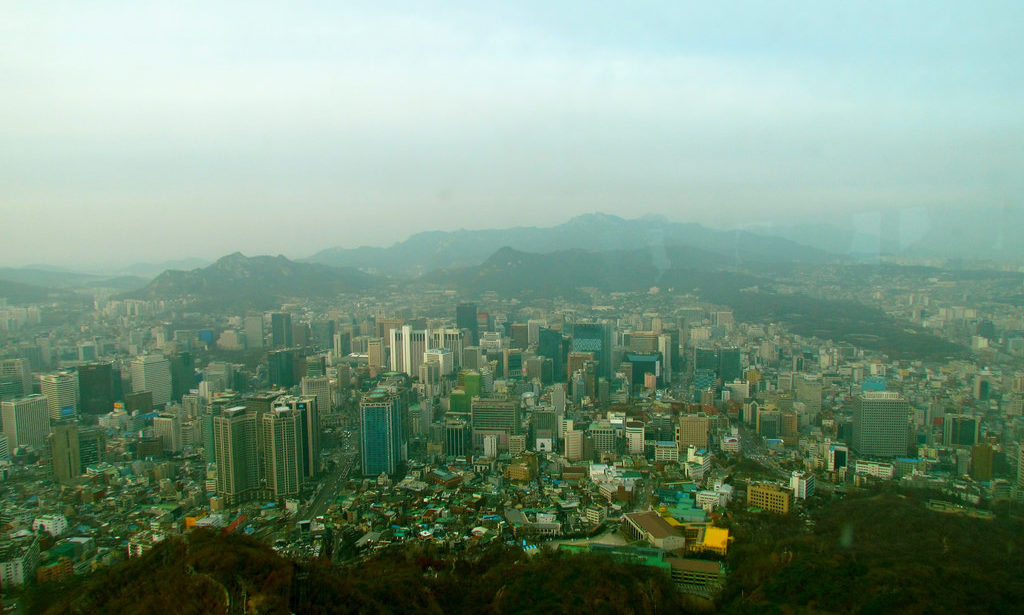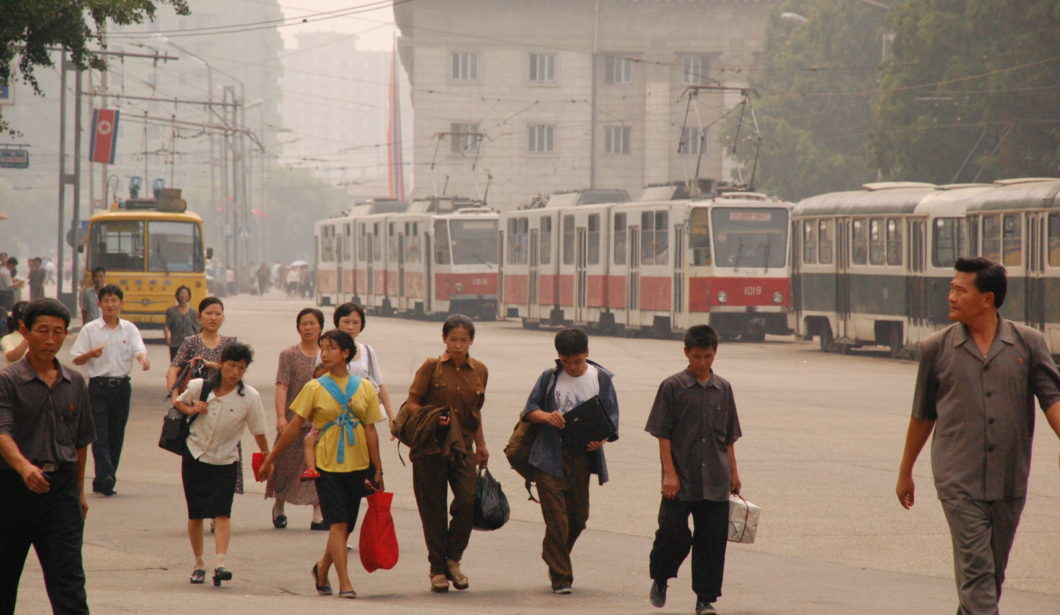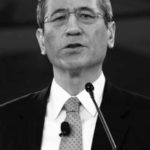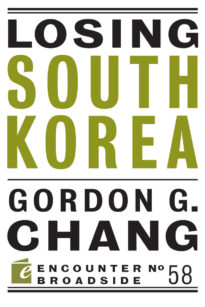When Moon arrived in Pyongyang in September 2018, a reported 100,000 people greeted him, many waving either the North Korean flag or the blue-and-white Korean unification standard. No one was holding the symbol of Moon’s country, the Republic of Korea, yet he smiled the whole time and showed no displeasure at this breach of diplomatic protocol. The only South Korean flags in evidence were the two painted on the plane that brought Moon to Pyongyang and the flag badge on the lapel of Samsung’s Lee Jae-yong. None of Moon’s aides wore a lapel badge of the South’s flag. Moon didn’t either.
Throughout the trip, Moon went out of his way to downplay the legitimacy of the country he was elected to represent. His language was the key sign. While visiting the North, he often referred to South Korea as “nam cheuk,” literally meaning “south side” or “south,” when the custom has been for South Korean leaders to say “Hanguk,” literally “country of Han people.” Moon also spoke of “nam cheuk gookmin,” which translates as “south-side citizens.” South Korean presidents would normally say “uri gookmin,” literally “our citizens” and figuratively “my citizens.” In effect, Moon’s terminology portrayed South Koreans as residents of one geographical part of Korea rather than the citizens of a distinct country.
Moon went out of his way to downplay the legitimacy of the country he was elected to represent
Kim Jong Un did not reciprocate Moon’s rhetorical gestures. During Moon’s visit, Kim used the communist term “uri inmin,” meaning “our people” or “my people.” Kim showed no reluctance conveying the notion that North Korea was a fully legitimate country.
Neither of the Korean states—Moon’s Republic of Korea or Kim’s Democratic People’s Republic of Korea—recognizes the other as legitimate. Moon’s choice of terms during the visit was a subtle but significant signal that he was not even asserting the legitimacy of his own country.

.
Moon looks like he wants to change Seoul’s core position with respect to Korean political legitimacy. Since the founding of the South Korean state, school textbooks have stated that Seoul is “the only legitimate government on the Korean peninsula.” Moon’s Ministry of Education, disturbingly, has already changed textbooks to eliminate that foundational declaration. In addition, as reported by Tara O, also a former U.S. Air Force intelligence analyst, the South’s Unification Ministry has deleted the critical phrase from training materials.
Since the division of Korea in 1945, every Korean leader, both north and south of the Demilitarized Zone, has advocated unification. It’s no surprise then that Moon, in his summits with Kim, has promoted the union of the two rival Koreas. The Pyongyang Declaration of September 19, 2018, issued by Moon and Kim during their summit in the North Korean capital, states:
The two leaders reaffirmed the principle of independence and self-determination of the Korean nation, and agreed to consistently and continuously develop inter-Korean relations for national reconciliation and cooperation, and firm peace and co-prosperity, and to make efforts to realize through policy measures the aspiration and hope of all Koreans that the current developments in inter-Korean relations will lead to reunification.
Moon looks like the first Korean leader to accept unification on the terms of the other state.
Over the years, both Seoul and Pyongyang have put forward unification schemes, like the “Democratic Confederal Republic of Koryo” proposed by Kim Il Sung and the “Korean Commonwealth” or “Korean National Community” advanced by President Roh Tae Woo of South Korea. Most of these proposals have contemplated one state with two separate governments as an interim step toward full union, but even these loose arrangements failed to gain the necessary support. The two Korean states have proved so different and so hostile that a “marriage of equals” has never been implemented.
Implementation could occur soon, however. Moon looks like the first Korean leader to accept unification on the terms of the other state. To pave the way for union, he has been trying to make South Korea’s form of government more compatible with the North’s.
Most fundamentally, Moon’s Democratic Party of Korea in early 2018 led an attempt to remove the notion of “liberal” from the concept of “democratic” in the country’s constitution. The South’s “conservatives” turned back the effort, but the Education Ministry in June of that year proposed to change the country’s textbooks to describe the nation’s political system as just “democracy,” rather than “free democracy.” The ministry ultimately succeeded in removing references to “freedom” from middle-school textbooks.
Some South Koreans believe that “free democracy” in their country is “currently on the verge of a collapse”
On the Korean peninsula, democracy does not have to be “liberal.” The Kimist regime rejects the concept of liberalism but nonetheless maintains that it is “democratic.” Its formal name, after all, is the Democratic People’s Republic of Korea. Moon’s political party shares the “Democratic” label but is leading the attack on liberal governance.
Moon is clearly eroding democratic institutions in South Korea. Since becoming president, he has exercised control of big broadcasters to reduce the airing of dissenting views and to promote the North Korean perspective. “An American expert recently visiting Korea was warned by a state-funded media outlet to avoid any remarks critical of Moon’s approach to North Korea,” a leading authority on pro–North Korea activities, Lawrence Peck, told me in September 2018.
Moon has reversed a decades-long trend of democratization and liberalization
To reinforce its control over messaging, Moon’s government has also clamped down on social media. The Justice Ministry has been thinking of ways it can remove content judged to be causing “social distrust.”
Some South Koreans believe that “free democracy” in their country is “currently on the verge of a collapse,” as it was put in the “Statement of the Congress of the Republic of Korea on the National Emergency on the Situations That Face the Nation,” published on September 4, 2018. Alarm over the loss of freedom is now widespread in South Korea.

.
Of course, Moon did not invent South Korean authoritarianism. The country has a long history of hardline rule, starting with its first leader, Syngman Rhee, and continuing with strongman Park Chung Hee and two generals-turned-presidents, Chun Doo Hwan and Roh Tae Woo. Park Geun-hye and her post-Roh predecessors also used—and abused—the power of the state.
Moon promised to be different. In his inauguration speech in May 2017, he declared, “I will strive to get rid of authoritarian practices in the presidency.” Although he made his name as a human rights lawyer and campaigner for democracy, Moon has been far more aggressive in the use of state power than his predecessor, Park. He has reversed a decades-long trend of democratization and liberalization and is now returning the South to a dark period. The South Korea of tomorrow, unfortunately, could resemble the South Korea of the past.
This essay has been adapted from Gordon G. Chang’s Losing South Korea, coming March 26 from Encounter Books.

